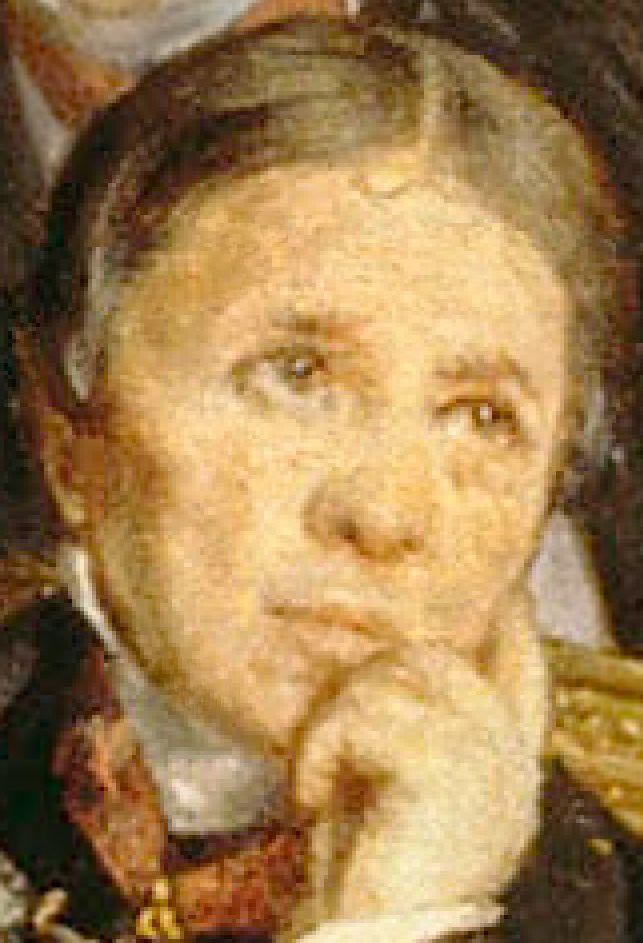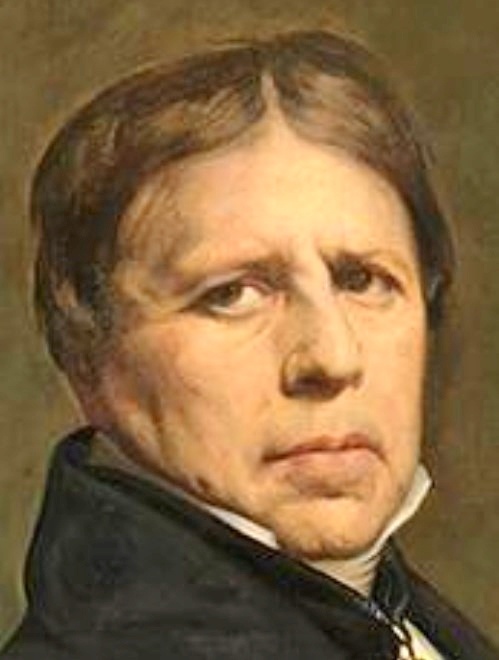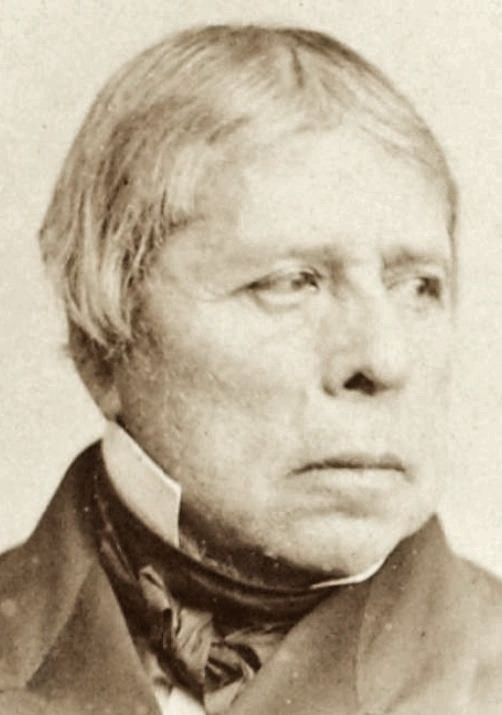Jean Auguste Dominique Ingres (1780–1867), painter
1st image: Soirée; 2nd: autoportrait (1857); 3rd: photo by Disderi (1860); 4th: autoportrait "a ses éléves" (1836).
France’s foremost painter, Jean Auguste Dominique Ingres (he signed his letters with "Jean Jngres"), occupies the most prominent place in Une Soirée au Louvre. Universally admired —with Delacroix10 as perhaps the lone exception — Ingres' authority extended across half a century, inspiring later artists such as Renoir, who described his works in the 1880s as part of his Ingresque period.
Ingres was a neo-classical painter deeply influenced by Raphaël and other great Italian masters. Alongside his many religious works, he became renowned for his portraits and exotic nudes. One of his celebrated pieces is Le Bain Turc (The Turkish Bath, 1862). At the 1855 Exposition, no fewer than sixty-eight of his works were showcased (Video).
In 1835, he became Director of the French Academy in Rome, a post he held until 1841. As director, he mentored numerous Prix de Rome winners —including architect Duban60, painter Flandrin79, and composer Gounod70b: all future vendredi-soirée lecturers and guests.

Pantheon Charivarique (1842)
With his key student Amaury Duval44a, Ingres transformed the young actress Rachel Félix81 into France’s embodiment of the classic Muse of Tragedy. According to early press reports, Biard’s initial version of Une Soirée au Louvre included Rachel —corroborating Ingres' front-row placement in the final painting.
Beyond painting, Ingres was a devoted music lover, favoring the violin over all else. Composer Gounod wrote: "Ingres is crazy about music."
His passion for the instrument lives on in the French expression mon violon d’Ingres (figuratively meaning "my hobby horse", or secondary passion).
While in Rome, he befriended Franz Liszt50b and Countess Marie d’Agoult, later creating portraits of both. He frequently played Beethoven’s chamber music at the Villa Medici with Liszt, who graciously described his playing as "charming."
Two unusual elements surrounding Ingres in Une Soirée au Louvre spark curiosity:

The document tucked in his top hat:
Could this be Eugène Giraud's11 caricature of Ingres, which he may have taken rather than allowing de Nieuwerkerke16 to retain it?
It is surprising that, despite frequent attendance at the vendredi-soirées, de Nieuwerkerke’s caricature collection does not include Ingres. Perhaps Ingres never stayed for the après-soirées at Viel-Castel's43 atelier where Giraud made his caricatures, late in the evenings?
Or is the top hat with the drawing entirely Biard's idea?

The violin(s) resting on the chair:
One violin is visible, but there are two bows on top.
Does that indicate that there is also another violin present? Did Narcisse Girard23 leave his bow on the chair but keep his violin?
Could this be Ingres' 7/8-sized 'ladies' violin (given his body height of only 1m53)?
Or is it Delphin Alard’s15 priceless Del Gesù Guarneri, or both?
These enigmatic details add another layer to Ingres’ portrayal in Une Soirée au Louvre.



